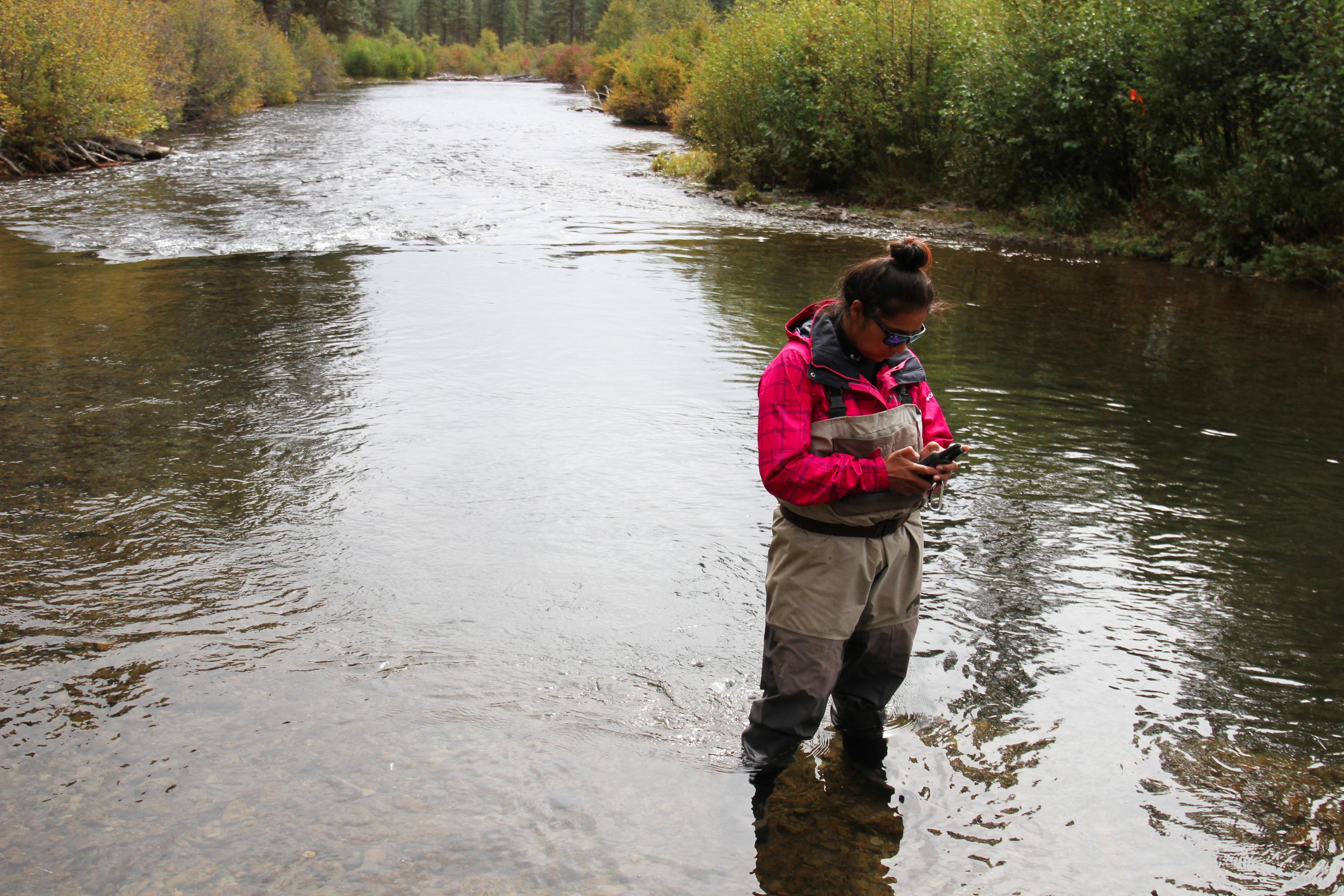
Fish technician Mystina Spinl-McCormack plugs in GPS coordinates to mark the location of a salmon redd on the Warm Springs River.
Amanda Peacher / OPB
OPB went along for a day on the Warm Springs River with tribal fisheries staffers early in the season to look for "redds," or spawning nests, which female fish create from riverbed gravel. Click "play," on the audio player above, to hear the audio postcard with Arthur Mitchell, a Warm Springs tribal member and fisheries technician.
Every fall, thousands of salmon make their way upstream to spawn in the same Northwest rivers where they hatched. Each week during spawning season the Confederated Tribes of Warm Springs count Chinook salmon nests, called redds.
The tribes have a goal of sustaining a population of 1,500 wild fish in the Warm Springs River. That's in addition to the 7,000 returning hatchery fish produced by the tribes.
Historically, about 2,800 wild fall Chinook came back every year. But salmon populations across the Northwest have been affected by habitat degradation and dams that impede juvenile salmon, or smolts, on their downstream journey.
"The tribe has very much a holistic, ecosystem view. They've always had that view," said Cyndi Baker, a fisheries biologist with the research program for the Warm Springs Tribes.
The tribal group receives funding from the Bonneville Power Administration, through accord agreements, which is intended to help mitigate the damage from Columbia River dams downstream.
"We monitor different ages and parts of the life cycle of the fish while they're on the reservation," said Jens Lovtang, a fish production biologist with the tribes.
His staff counts the fish as they travel upstream to spawn. They count redds, or salmon nests, to assess how successful wild fish are at laying eggs in the gravel.

Arthur Mitchell searches for salmon redds on the Warm Springs River, a tributary of the Deschutes River.
Amanda Peacher / OPB
Lovtang said that the habitat on the Warm Springs River and in other Deschutes River tributaries on the reservations is good.
"It's a very stable system but it's wide and very shallow," he said. "This year they're working on creating a more complex habitat that will benefit juvenile fish, by placing more woody debris in the river."
Unlike many other Columbia River basin spawning streams, Warm Springs didn't have the fish die-offs that were seen in many Northwest tributaries. Those fish kills were usually attributed to high temperatures.
"This system is cool, it's got a lot of potential," Lovtang said.
"We're all working together to make for a good system for the salmon to survive," Baker added.